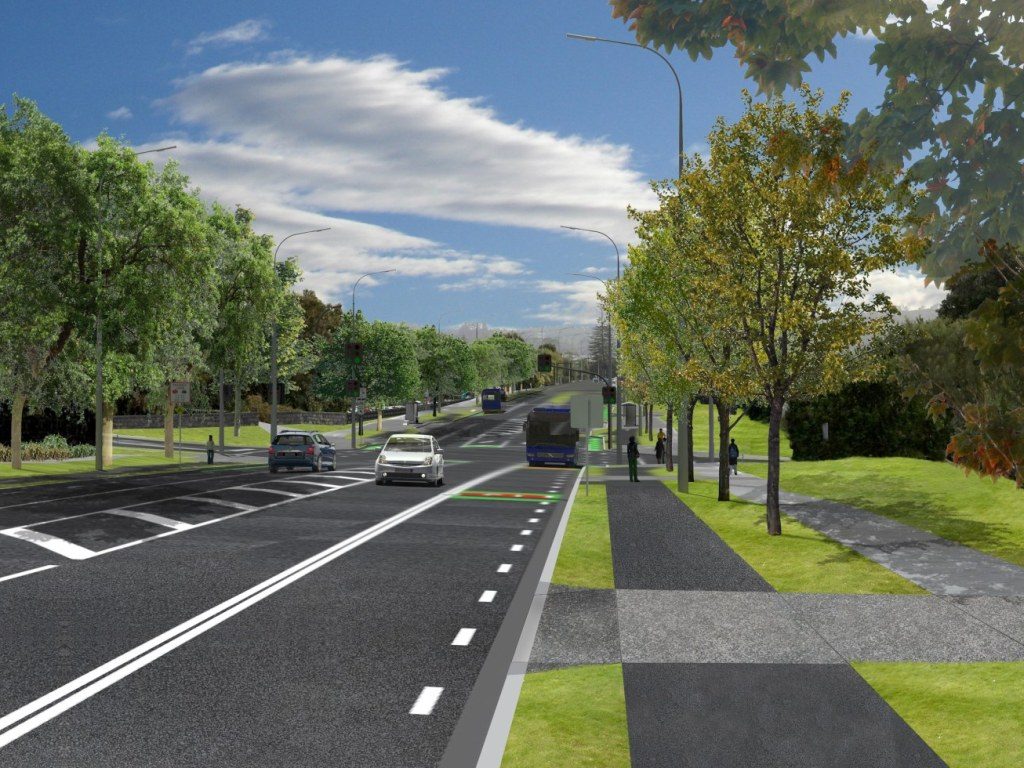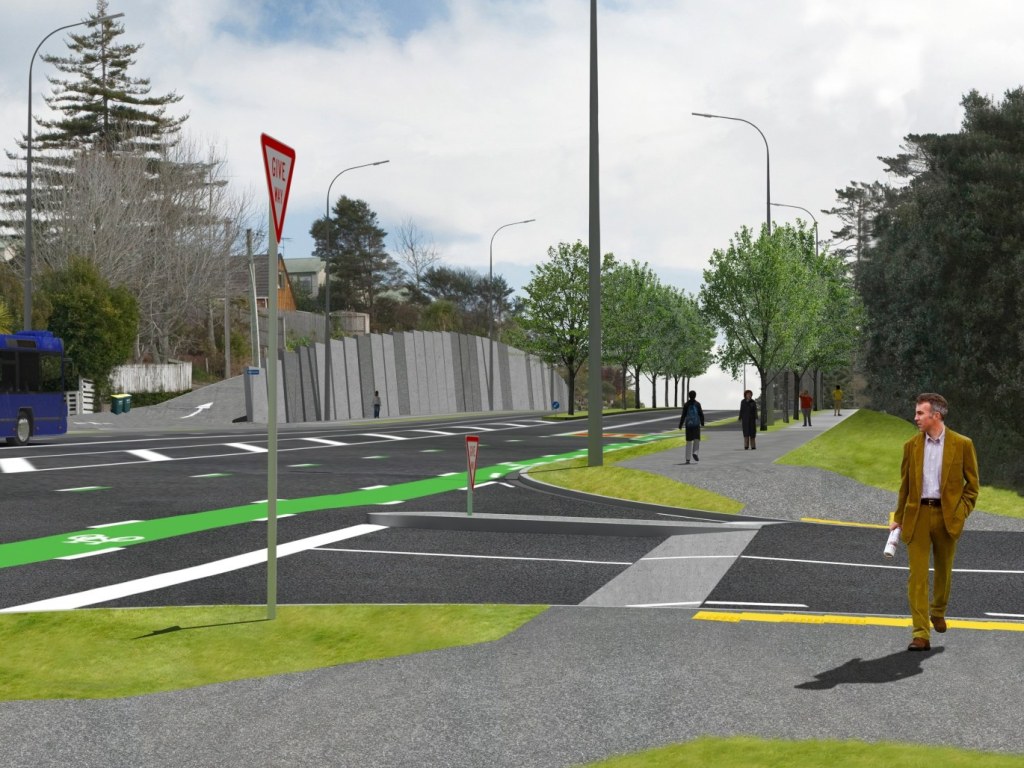As we head into Christmas with the knowledge that the City Council will be installing separated cycleways along Ilam Road in the New Year, it seems we’re not the only place in New Zealand to be looking at this type of cycling provision. Auckland Transport are also looking at introducing separated cycleways as part of the Albany Highway upgrade on the North Shore.
Albany Highway is a very busy and fast 2-lane arterial road with growing demands as urban development happens all around it. It has some conventional cycle lanes in parts, but also some grotty roundabouts. The upgrade proposes to make the route a 4-lane highway with traffic signals instead, and provide separated cycleways behind the kerb.

Akld Trpt have also helpfully provided some 3D visual representations of what the finished product might look like; some hi-res versions are available on the Cycling Action Auckland blog. Rather oddly they don’t actually show any people cycling along the facilities and one or two pedestrians seem a little confused about where they should be…

Of particular interest is what they are planning on doing at side-road intersections. People cycling will have the choice of either rejoining the road and using a cycle lane OR joining the footpath and going across a raised crossing. This gets around the slightly pesky situation in NZ whereby side-roads by default have priority over pathways but not over on-road lanes.

It’s nice to see that other Councils around the country are starting to recognise that neither conventional cycle lanes nor shared pathways are going to appeal to many people who’d like to cycle more, especially the “interested but concerned”.



I am all for cycle lanes all over the country, but the last situation sketch shown above is showing nicely all that is wrong with cycling lanes in NZ. I have absoilutely no idea how to handle that situation?? Which is the cycle path? Why are there pedestrians on both pedestrian and cycle paths (supposing the dark grey path is the cycle path)? Why is the green on road cycle lane not continued? Why the green triangle, not connected to the green lane, and the red area?? How is a cyclist supposed to make sense of this situation without making a careful study first?
Sorry for the rant, but in my opinion there are way too many situations like this one in NZ where there are random coloured blocks on roads or paths, usually not connected to other cycle lanes or paths. If there is a cycle lane it has to go through all the way, also over intersections, also going left or right, also on bridges, also when crossed by side roads or exits. The alternatives shown above are only confusing.
Interesting feedback Nina, and you are right that cycle facilities should be fairly intuitive and consistent (a reaction that came up frequently in our NZTA research too). The drawings aren’t the best for explaining what is going on in this case, esp. when no cyclists are actually shown anywhere and pedestrians seem to be wandering all around the place – possibly cyclists weren’t really the target audience? There is actually a “Transit” (high-occupancy veh) lane next to the kerb (quite common in Akld); hence the green/red markings there – it is not for cycling on (not pleasantly). The only reason there is a green cycle lane across the side-road is because it is the only currently legal way to give cyclists priority over side-road traffic (if you choose to stay on the path you would have to give way). Then it leads back onto the off-road pathway.
So the upshot is: ignore the peds in the pictures, they only confuse. And when you come to a side road, you can choose to stay off-road or go on-road, depending on your confidence, patience, etc.